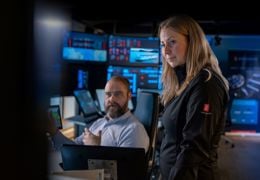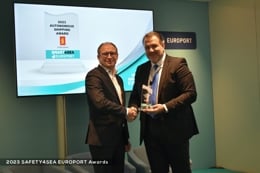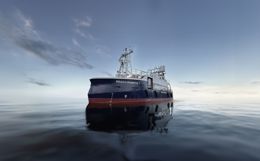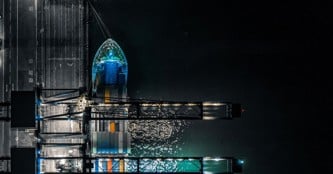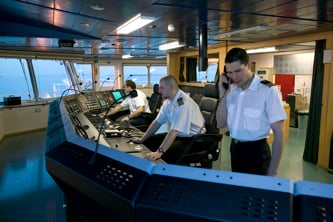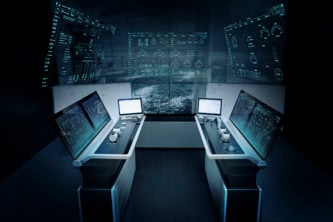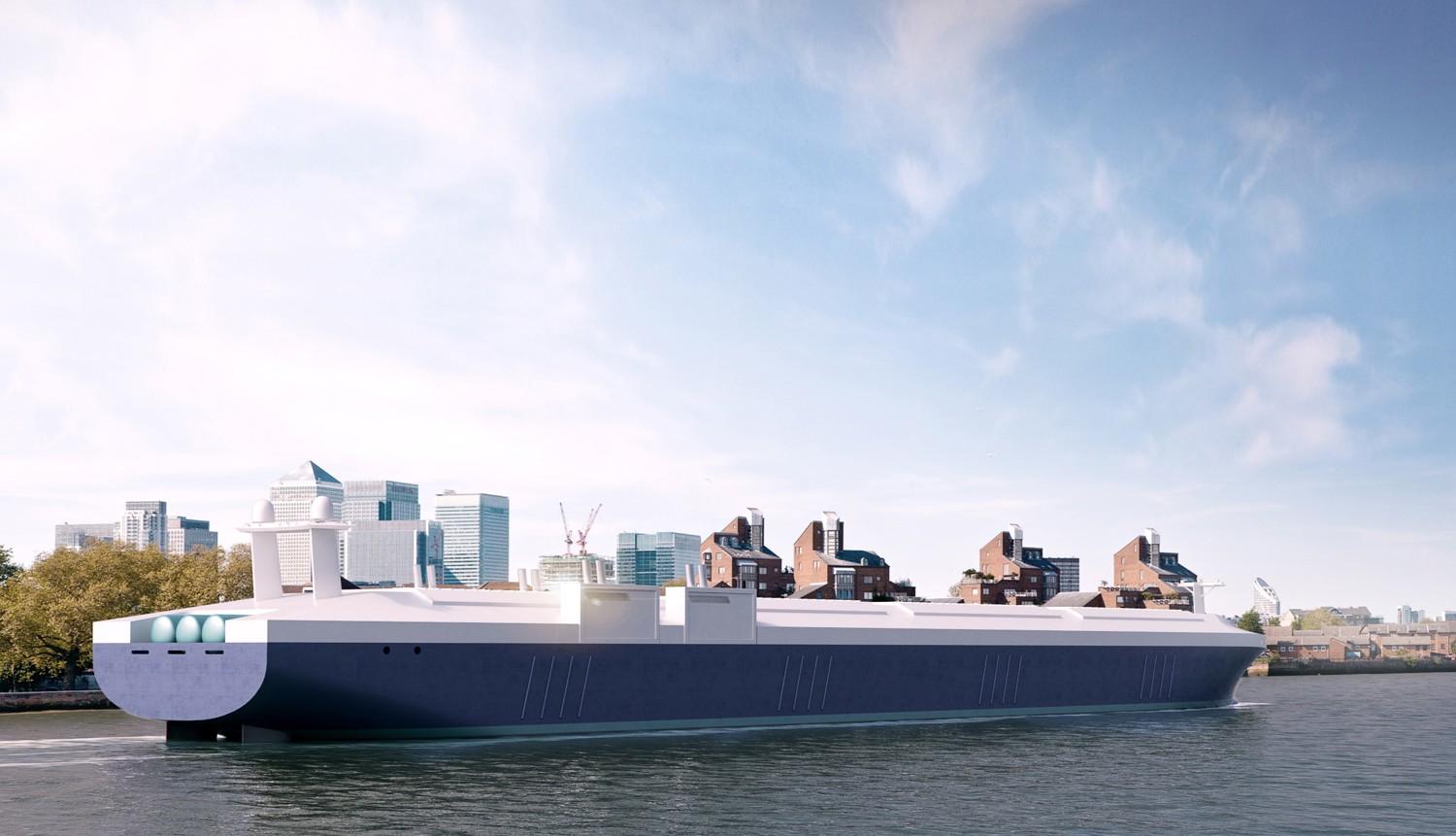
Remote & Autonomous Ship Technology
We are leading the development of autonomous vessel technology as a partner in a range of projects to make remote and autonomous technology commercially viable. Autonomous shipping technologies are now available and these technologies will soon be applied to more vessel functions thanks to enhanced digital capability and better connectivity at sea.

Why choose autonomous ship technology?
- Safety - Reduced risk of human error, a major factor in maritime accidents
- Reduced emissions - Optimising routes, navigation, and cargo handling lowers fuel use
- Recruitment – New possibilities for maritime operations and careers on shore
- Reduced cost - Fewer crew onboard simplifies ship design and reduces build cost
Three ways we help our clients get started with Remote & Autonomous technology:
Most vessel owners understand the top line benefits of remote and autonomous technology. But getting started with new technology is not an easy decision, financially, technologically, or even from human resources view. At Kongsberg Maritime, we have developed three ways forward for vessel owners, allowing for different needs, capacities, and budgets.
-
1. Segment Solutions
We offer R&A segment specific solutions that cover the whole R&A technology package for a vessel or fleet of vessels. The ship, connectivity, and key enabling technologies, such as the Remote Operations Centre, are provided by Kongsberg Maritime. Our clients can use these technologies on their own, with their own crew. This is the most comprehensive step for ship owners.
-
2. Service Solutions
Through our subsidiary, Massterly, we provide R&A operations as a service, in which Kongsberg Maritime supplies the technology, as well as the crewing and asset management service, while Massterly manages the R&A operations. This is for owners who don’t want to or cannot invest in their own R&A capabilities.
-
3. Product solutions
The most economical way to start: Clients choose solutions from our portfolio and apply it to their vessels, be it simpler solutions or more complex products. This is a good option for vessel owners interested to retrofit older vessels with R&A technology that may provide some of the benefits without having to buy a complete system.
Key technologies: The Remote Operating Centre
-
A key development is the Remote Operating Centre (ROC). This allows navigators and fleet managers to operate commercial vessels in transit or in harbour remotely via satellite or any relevant connectivity system, such as WLAN, 4G or 5G. The ROC can be located anywhere. Using remote workstations, qualified personnel can monitor fleets or control single vessels. A vessel can switch to autonomous mode, with ROC operators re-taking control in the event of unexpected events. For normal vessels, the ROC can give the onboard crew breaks during scheduled rest periods. Pilots can remote control a vessel during port manoeuvres.
Key technologies: Autocrossing and autodocking
-
In 2016, Kongsberg Maritime introduced autocrossing and autodocking technologies for ferry operators. In autocrossing mode, a ferry captain can let the ferry's systems and sensors work with the power and propulsion system to perform predictable transits with maximum fuel efficiency, including acceleration and deceleration. The technology has been successfully deployed on numerous ferries since its introduction.
Autodocking technology, an extension of autocrossing technology was also developed for ferries, allowing operators to increase efficiency during repetitive docking procedures.
Key technologies: Situational awareness and collision avoidance
-
Artificial intelligence and machine learning technology provide precise, real-time data for detecting, classifying, and observing objects, obstacles, vessels, and the shoreline. This technology, coupled with awareness of a ship's position, velocity and attitude, is key to remote or autonomous operation. Awareness requires fusing sensors and sensor platforms that provide constant feedback and cover 360° around a vessel, plus camera technology that performs well in poor weather and at night. Users are alerted in case of reduced sensor capability.
Our remote and autonomous ship technology in the news
Remote and Autonomous Ship Technology
Frequently asked questions
These new technologies can make shipping safer, more efficient and create new and exciting possibilities for maritime operations and careers on land and at sea.
Autonomous systems can operate without the risk of human error which is a significant factor in maritime accidents. These systems can optimise routes, speeds, and other parameters to minimise energy consumption, leading to substantial cost savings for operators, as well as reduced emissions and fuel costs.
There is also the potential to introduce transformational maritime operations and offer new, shore-based career opportunities which can help address the shortage of seafarers.
Seamless connectivity remains one of the key challenges for remote and autonomous operations, particularly in the open oceans. However, through the successful demonstrations of our remote and autonomous technologies on several pilot projects, Kongsberg Maritime has already proved that remote and autonomous technologies are applicable to coastal or inland waterway vessel types.
We will continue to work with satellite and telecommunications companies to develop global solutions for remote and autonomous shipping.
There is potential to introduce transformational maritime operations and offer new career opportunities on the journey to full autonomous operation. The maritime industry continues to suffer from a lack of skilled and competent seafarers, and remote and autonomous technology could help to address this through offering shore-based roles, which would make the maritime industry more attractive and accessible for people who would perhaps not consider working at sea. As an alternative to spending weeks and months away from home and family, these new roles would open up a range of new opportunities.
Our Remote Operations Centre (ROC) means shore-based crews can monitor and control a variety of functions without going to sea, thus offering a safer working environment attractive to more people interested in maritime careers. Operators in the ROC carry out fleet monitoring, across multiple vessels, so they can observe the performance of vessels and their systems in real-time and intervene where required. The ROC operators also have a role in the remote operation of vessels, carrying out navigational duties during docking and transit manoeuvres.
There have been significant advances in the deployment of remote and autonomous technologies across several sectors in the past decade. Some subway systems are remote controlled, while some trucking and mining operations use a mix of remote and autonomous technologies. With cars, autonomous technology continues to advance. What’s common across all sectors, including shipping, is that this technology is being used to solve specific problems – it is not just autonomy for autonomy’s sake.
Technology is being added incrementally. In the car industry, systems such as automatic braking, parking, or satellite navigation now come as standard. In a similar way, Kongsberg Maritime sees systems such as collision avoidance or autodocking becoming standard items on certain vessel types in the next decade.
Autonomous maritime solutions can contribute to environmental sustainability. They can optimise operations, routes, navigation, cargo handling while reducing energy consumption and greenhouse gas emissions. These technologies can help manage fuel and energy use, making smart decisions to optimise the voyage (e.g. acceleration, slow steaming, selecting routes). With their precise navigation, automated collision avoidance and cargo handling can reduce the risk of accidents, oil spills and other environmental incidents.
Autonomous systems can optimise routes, speeds, and other parameters to minimise energy consumption, leading to substantial cost savings for operators.
Crew-costs can be reduced, and the structural costs of ships can be lowered if they’re designed for autonomous solutions. Full or semi-autonomous ships could be designed differently, meaning lower capital costs. Ship design will be simpler: no deck house, water, heating, galley and other costly sub-systems. The removal of these systems will also reduce the ships' weight, or it can be used to increase cargo capacity.
